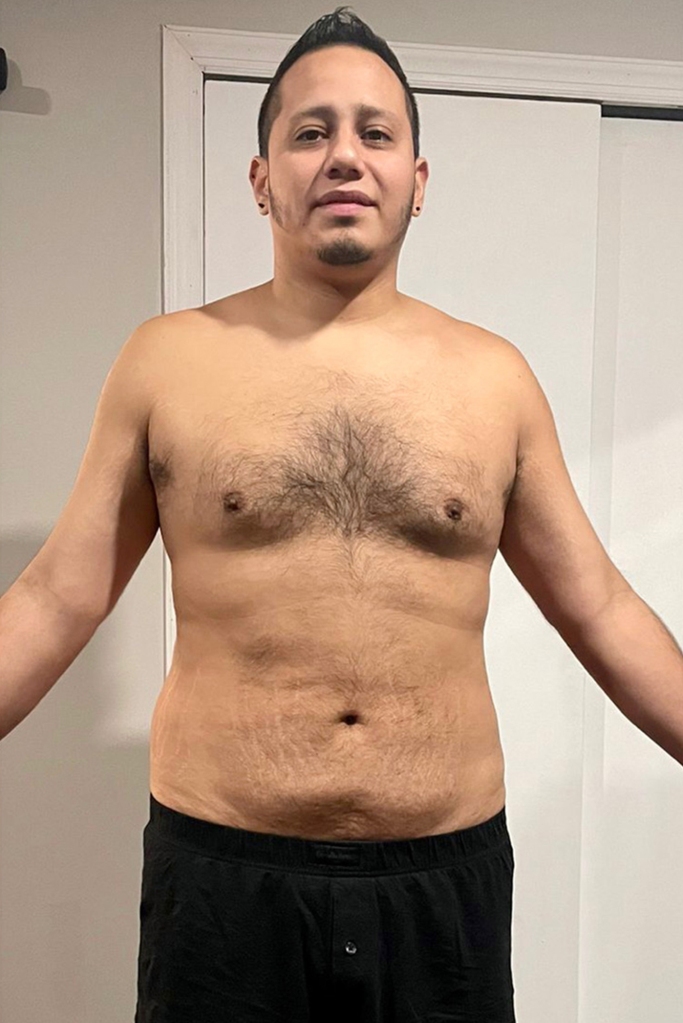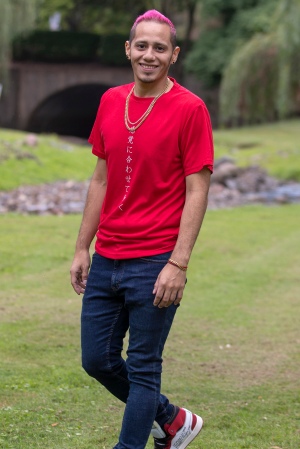How non-invasive weight-loss procedure ESG works
Camilla Gonzales longed for the days when she would strut the beaches of her native Brazil, showing off her toned shape. But the 32-year-old architecture student — who stands 5-feet-5 — from Queens had gained 50 pounds, hitting 196 in the midst of her divorce.
“I used to have a nice, healthy body, but recently, every time I looked in the mirror I was sad,’’ she told The Post. “I tried medicine and crazy diets, but nothing worked. I was really suffering, to be
honest, and I wanted a life change.”
She started scouring the Internet for weight-loss operations. A lot of the surgeries sounded scary, but Gonzales was intrigued by Instagram posts about a simple-sounding procedure, called endoscopic sleeve gastroplasty, which required no actual cutting.
A week later she had a consultation with Dr. Steven Batash, a gastroenterologist with his own Endoscopic Weight Loss Center in Forest Hills. Gonzales had her surgery in July, and has already dropped 26 pounds in six weeks.
BEFORE: 174 pounds
AFTER: 125 pounds

“It’s only 30 days but there is a crazy difference,’’ she said. “Every day I weigh myself and I’m a little less, and I’ve started fitting in clothes. I can see myself again! I have friends who have seen me and are now scheduling the procedure for themselves.”
Bariatric surgery — where part of the stomach is surgically removed — has long been an aggressive means of battling obesity, but Gonzales is one of many people who are now turning to a less invasive, non-surgical option. Endoscopic sleeve gastroplasty requires no incisions or visible scar, and was just approved by the FDA in July for weight loss.
A doctor, generally a GI specialist, goes in with an endoscope and places stitches in the stomach’s lining, reducing its capacity to store food. Dr. Batash is one of only a handful of doctors performing ESG, which costs about $11,000 out-of-pocket, because most insurance companies don’t cover it.
The procedure is also called “suture sculpt,” and his patients include models, the rapper Fat Boy, and reality star Honey Boo Boo.
“I don’t cut or change blood supply; I fold the stomach like an accordion, making it shorter and more narrow,” Dr. Batash told The Post. He goes in through a patient’s mouth with a standard endoscope, creates a bunch of tiny holes and fills them with suturing materials.
“We decrease the stomach size by 70 to 80 percent and delay the food in the stomach by six to seven hours, so a person’s appetite is suppressed,” he said. “Before, someone who needed 20 bites is now full after four or five bites and feels full for hours.”
BEFORE: 220 pounds

AFTER: 155 pounds

As for recovery, Gonzales said, “I was on a strict liquid diet for a week, which was not easy. But after three days of resting, I could do everything except strenuous exercise. You just have to respect your limits.”
ESG also makes it possible for patients to be coy about what they’ve had done.
“Because there are no scars, some of my patients just tell people they lost weight on a liquid diet or cleanse,” said Dr. Reem Sharaiha, the Director of Metabolic and Bariatric Endoscopy at Weill Cornell. She told The Post that she has seen positive results. “I had a guy in college who lost over 100 pounds and it helped his studies as well as social life because he was more motivated in general, and a single mom who lost 80 pounds and now says she can be here for her teenage daughter.”
Two radio personalities — Alfredo Larrea and Nilda Rosaio — at competing Latin stations in New York City were both inspired to do ESG after hearing on-air ads for Dr. Batash.
Alfredo Larrea, who works at LA-X96.3 under the name DJ Shula, had been diagnosed with severe diabetes, so the 32-year-old — who is five-foot-seven and weighed 220 pounds in September 2020 — called immediately. He is now 155 pounds, his blood pressure is down and his diabetes is under control.

“After two days I felt no discomfort, as if I had nothing done, and I had almost no pain,’’ he said. “People that knew me before don’t recognize me.”
When he did a gig during prom season, the school’s principal saw him outside and told him he couldn’t leave until his parents picked him up. “I look so much younger I was mistaken for a student!”
Patients start off on a liquid diet, and then move on to purees before returning to regular food, but they have to be vigilant. After a few years, the stomach begins to stretch, the sutures loosen or fall out and, because the stomach hasn’t been surgically reduced, patients may regain weight.
“The mind doesn’t understand that the stomach has shrunk so you really have to control the portions,’’ said Michelle Mayboga, a 27-year-old student who works part-time in hospitality management and recently moved from Brooklyn to Miami. At her heaviest, Mayboga, who is 5-foot-3, had weighed 174; four years after surgery, she is happy at 125. “I couldn’t move before but now I am doing paddle boarding and other sports.”
Though many in the medical community agree ESG is less risky than bariatric surgery and has potential to help obese patients get on the right track, some are skeptical of the long-term outcome.
“The results have a wide spectrum; some people lose 50-60 pounds and others actually gain weight when you look at the two-year data,” said Dr. Christine Ren-Fielding, chief of bariatric surgery at NYU Langone. “It has potential to be used as a weight-loss tool, but not if someone is going to look at it as a fad instead of a lifestyle change. We see a lot of the people who have gained weight back after 5 years.”
Dr. Batash believes that some bariatric surgeons are bashing ESG because it cuts into their practice.
“Surgeons see these procedures as a threat and love to talk us down, but there is this revolution in GI where we are doing more and more in a non-invasive way — which
takes away from what they do,’’ he said.
BEFORE: 180 pounds

AFTER: 138 pounds

Dr. Sharalha told The Post: “I was one of the few in the country doing these in 2015, and it is durable up to five years. If you don’t follow a good diet you can gain back some of the weight. I still refer the super obese for surgery, but [ESG] is very low risk compared to surgery. “
Nilda Rosario, 49, who is a co-host at Mega 97.9, had her ESG in December 2020. After being thin most of her life, she had jumped to 180 pounds, an escalation she
attributes to stress. Six months after the procedure, she was down to 138.
“I’ve heard that some people lose hair after doing this, or their skin becomes wrinkled from the rapid weight loss, but none of that happened to me,” she said. “I feel more sexy and I dress like I used to.”
Rosario said her husband was supportive of her decision, joking, “He said I’ve become the perfect date because he spends half the amount on dinner.”
Read the full article Here


